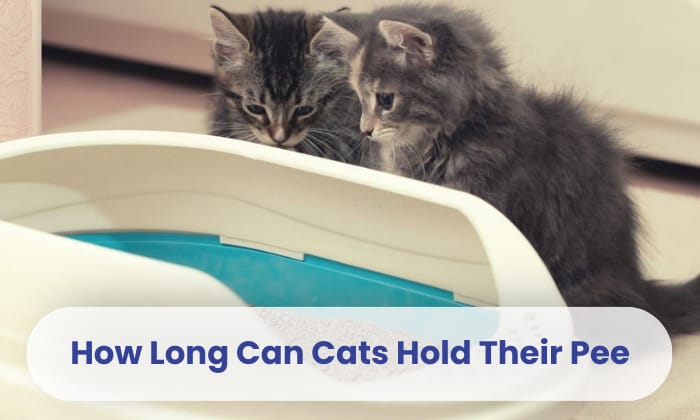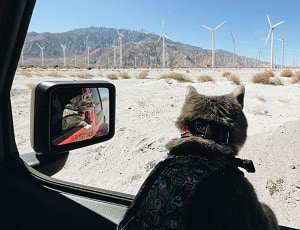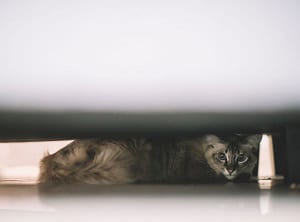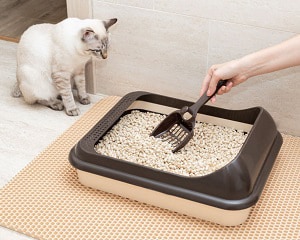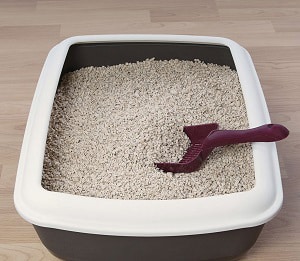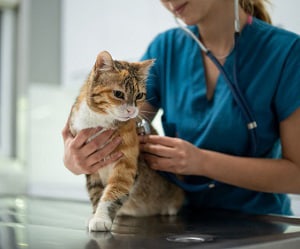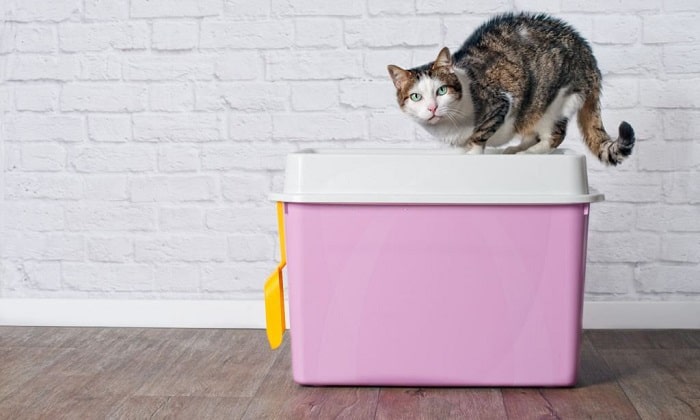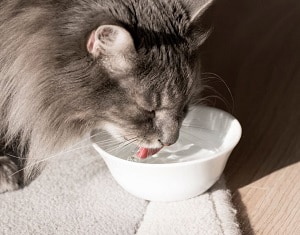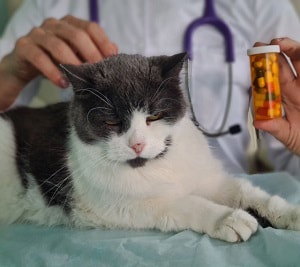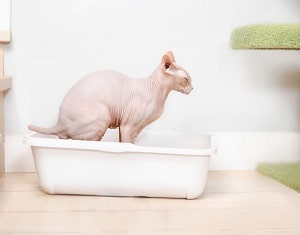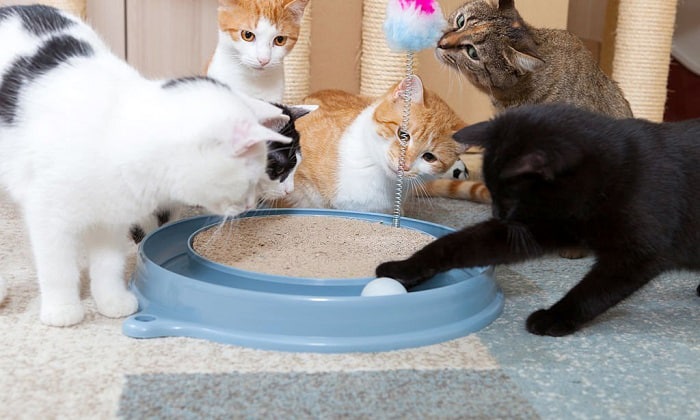No matter how adventurous your cat may seem, a bathroom routine is not something you should overlook.
But how long can a cat hold its pee? Compared to dogs that can only hold for up to 12 hours, cats can withhold their pee or poop for about 24-48 hours. They do not like doing their business in uncomfortable situations.
This article talks more in detail about how long cats hold their pee, the reason behind it, and the ways you can do to keep them peeing at the right time.
Table of Contents
How Long Can Cats Go Without Litter Box? – The Extended Answers
Cats love routine, and that includes the time they go to their favorite place—the litter box. If, in a certain situation, they cannot get a hold of their “bathroom,” they will try to hold them for a longer period.
Let’s look at the different scenarios, wherein cats hold their bladder.
1. Traveling
Most cats can travel, and even though yours do love it, there can be a particularly stressful situation that affects their bathroom routine.
In a new environment, cats are more observant in their place, looking out for possible dangers. They also hate getting soaked with their pee or soiled with their poop. That’s why cats hold their poop and pee when traveling.
Traveling is also uncomfortable for them, so they may feel stressed to even think about their bathroom needs.
What should you do?
Make your cats comfortable throughout your journey. A cat not urinating for 24 hours is normal, especially if it’s a long trip.
The best thing you can do before traveling in a car or a plane is to skip your cats’ breakfast meals. Doing so is not a punishment, but ensuring their safety throughout the trip.
Always bring a large crate with you. Even though your cat is used to being held or cuddled, it’s not a wise decision to let them wander freely around the car. A crate makes them safe and comfortable.
Prepare an absorbent pee pad and put it inside the crate. Always bring extra pads with you, in case accidents happen.
Do not forget to let your cats drink at every stop. They need to rehydrate throughout this stressful event.
2. New environment
Whether a kitten holds its pee, the fact still remains that it’s not normal for your feline friends.
If you move to a different home or bring your cats with you on a trip, they may feel uncomfortable for a time being. If they can’t adjust right away, it can lead to urinary problems—whether excessive or inadequate.
What should you do?
Respect your cats’ boundaries in a new environment. Never force them to stop hiding. Let them acclimate to a new place in their pacing. In time, they will get used to it.
So, if a cat not peeing is hiding under the bed, sink, or table, you can put a litter box, food bowl, and water fountain near their hideout.
3. Unpleasant litter box
Truth be told, your feline friends are the kings and queens of cleanliness. They keep themselves clean all the time. That’s why never their litter box is uncleaned or else they will judge you with their squinting eyes.
What should you do?
Most cats refuse to use a dirty litter box. So, if you don’t see them urinating enough, check their litter trays.
Make sure to scoop the litter every day. You must change the litter sand every two to three weeks for good clumping sand. However, you need to replace it twice a week if it’s not.
4. Change in litter sand
All parts of cats’ lives are made of routine. So, even a single change can affect their mood and their usual activity.
Be mindful of your cats’ preferences. A new scent may also make your cats gag or hate using the litter box.
What should you do?
You might say that cats can just get used to the new litter sand. But that is not always the case. Moreover, letting your cat hold their pee overnight can affect their health.
Make a gradual change. Add the new litter sand to the former one, and add it little by little each day. Eventually, after five days, you’ll see that your cat is getting more used to it.
5. Post-operative urinary retention
Although uncommon, postoperative urinary retention may occur after surgery. If your cats go without peeing after surgery, then you must call or visit your veterinary clinic immediately.
Surgery causes a lot of stress that affects your cats’ peeing routine. However, when it persists, there may be other complications resulting in pain and blood in the urine. Go to the vet doctor for a thorough treatment.
How Often Do Cats Pee a Day?
Usually, healthy cats do their peeing routine about 2 -4 times a day. But the frequency still depends on different factors.
For instance, if your cat is eating more wet foods, this may increase the times they urinate in a day. There are no cats that are equal. For some, two times is enough, while others pee five times a day!
However, if your cats’ peeing routine suddenly changes, it can be worrisome. So, the best thing to do is monitor them daily.
How to monitor your cat’s pee?
One solution to see if your cats’ peeing routine is normal is keeping track of it. We know that daily monitoring is not always easy, especially if you need to go to work. But you can look at their litter box to recognize their usage frequency.
Other Causes of Your Cats’ Disrupted or Frequent Peeing Routine
If your cats pee twice their usual routine despite zero food or water intake changes, it can mean several things.
But there is a high chance that it relates to health issues like the following:
- Urinary Tract Infection (UTI)
UTI affects not only humans but even your feline friends at home. Cats who eat more dry food with an inactive lifestyle tend to get involved in this infection. Physical activity is crucial to their everyday life to ensure a healthy body.
Other causes of UTI include diabetes, hyperthyroidism, or kidney disease. UTI may be one of the symptoms of other underlying health conditions.
If your cats frequently urinate in small volumes or pee outside the litterbox, visit the vet doctor for a checkup to get them checked for UTI. These are the UTI signs you must pay attention to.
The best way to treat this condition is through medication to reduce pain. Another way is antimicrobial therapy since bacteria inside the urethra cause this infection.
- Kidney Infection
Another term for this infection is pyelonephritis. If you leave your cats’ UTI untreated, it could lead to this. Another cause can be bladder stones.
You’ll know something is wrong when your cats hiss at you when you try to pick them up or touch them. Excessive thirstiness is also one of the common symptoms of this infection.
Sadly, symptoms might go unnoticed until your cats have more severe cases. But you can still ensure your cats’ healthy lifestyle by giving them more water, exercising, and providing nutritious meals besides their dry foods.
Is it dangerous if cats hold their pee too long or don’t pee?
Yes. If cats go without peeing for more than 48 hours many times, they may have a blockage in their urethras. Once not addressed, it can worsen and cause more damage to the bladder and kidney.
Naturally, our bodies, including cats’, have ways to release toxins, and one way is through urination. Urination helps in regulating blood pressure and electrolytes.
How to tell if my cat isn’t peeing?
The most common way to know whether your cats are peeing or not is by keeping track of their peeing routine. If they are going back a few times to their litter box without urinating, then there may be a bladder obstruction.
Here are other signs you must look out for to see if your cats aren’t peeing:
- Loss of appetite
- Too much water intake
- Urine blood
- Lethargy
- Straining when urinating
- Peeing droplets
Ways to Keep a Cat Peeing at the Right Times
There are a few ways to make a healthy peeing routine for your cats, such as the following:
- Always clean their litter box – Cats are clean creatures. So, seeing their “bathroom” dirty makes them feel uncomfortable. Some rather stay still without using the bathroom than urinate in a stinky litter tray.
- Prepare for your trip beforehand – If you’re bringing your cats on a trip, you can bring a portable litter box and litter sand with you.
- Create a regular checkup schedule for your cats – Don’t wait until your cats feel sick to go for a checkup. This can reduce the possibility of untraced health illness in the future.
Once you notice changes in your cats’ routine, especially in using the litter box, contact the vet doctor right away to address the issue.
Conclusion
So, how long can cats hold their pee? Cats can hold them for 24-48 hours. However, doing so isn’t healthy for their kidneys and bladder.
Moreover, cats that don’t urinate frequently as often as before might mean an existing health issue. So, the best way to address this is to go to the vet doctor for a checkup and possible treatments.
Peeing is one way for your cats to release their toxins, so keeping them intact with their “bathroom” routine can avoid health problems in the future.

I am Amy Sawy, a Doctor of Veterinary Medicine (DVM) graduate from the University of Kansas. y husband, Dr. Plummer, and I own a veterinary clinic in Phillipsburg, Kansas. In addition to my professional background, I am a devoted pet owner myself, with a household that includes dogs, rodents, and most notably, cats – a total of five felines in my home.
In 2020, I joined an organization as a professional writer, leveraging my experience and collaborating with my team to deliver the most valuable information for your cat’s care.


